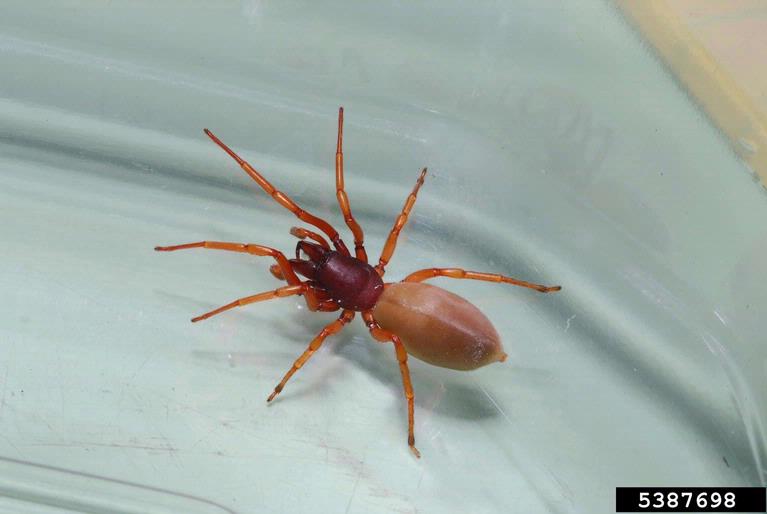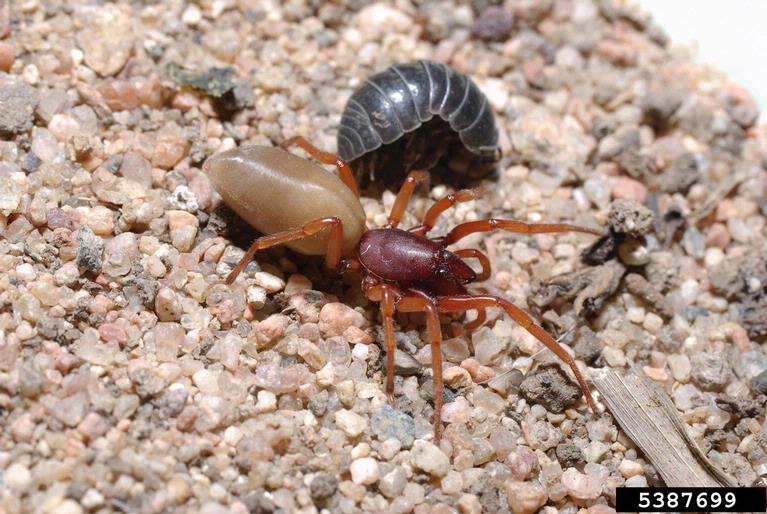Woodlouse Spider
Dysdera crocata
Identification
- reddish head area with cream- to gray-colored abdomen
- mouthparts and fangs protrude directly in front of the head, giving a menacing appearance
- six eyes
Nesting Habits
- under rocks, bark, trashcans, mulch, plants, wood piles, etc.
- prefer moist areas where isopods live
Diet
Significance
- appear menacing because of their large, forward projecting mouthparts and fangs
- not known to be a health hazard
- beneficial
IPM Recommendations
- Minimize nesting habitat around property.
- Seal exterior cracks and crevices.
- Install tight-fitting door sweeps at the base of all exterior doors.
- Vacuum individuals that enter buildings.
- Step on or smash individual spiders that enter.
- Catch and release (with a glass jar) spiders found indoors.
- Change exterior lighting to sodium vapor bulbs.
- Use pest monitors to capture invading spiders, especially between August and October.
- Reduce moisture issues around buildings.
- Follow control methods for isopods to reduce or eliminate this spider’s primary food source.




